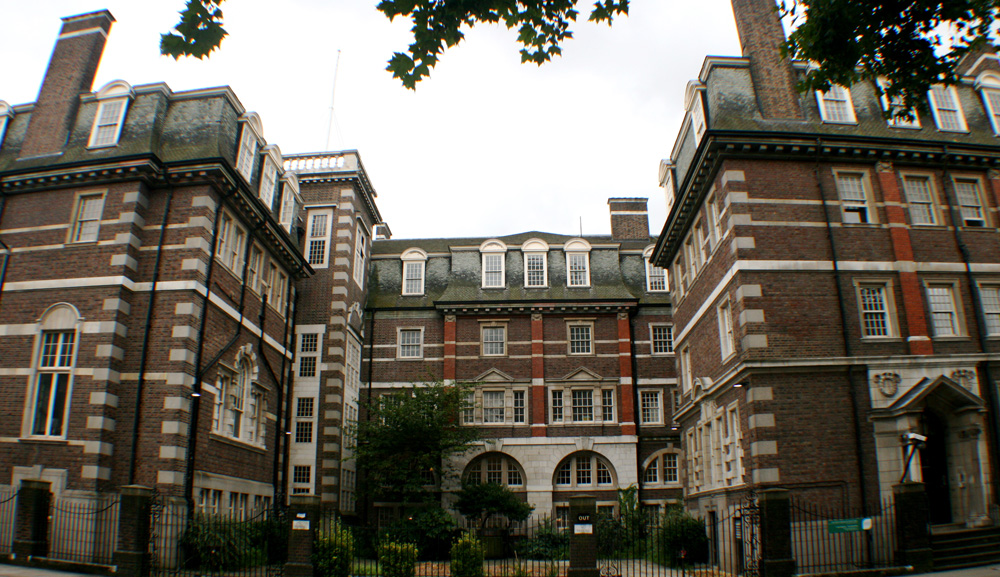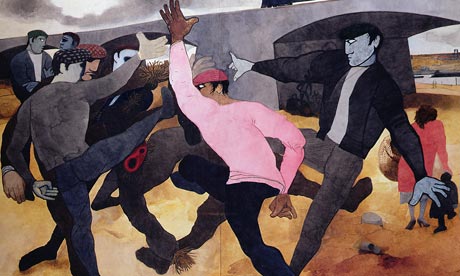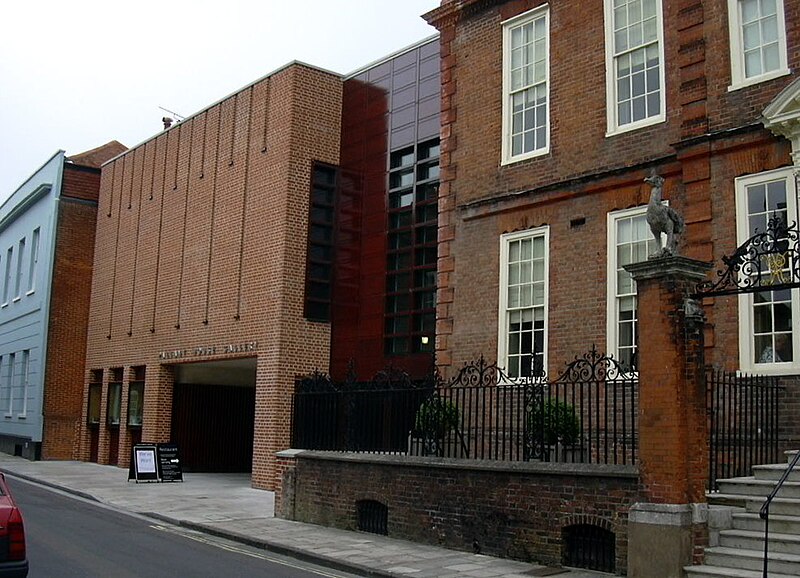Edward John Burra (29 March 1905 – 22 October 1976) was an English painter, draughtsman, and printmaker, best known for his depictions of the urban underworld, black culture and the Harlem scene of the 1930s.
Burra was born near Rye, Sussex,the only surviving son of Henry Curteis Burra, J.P. and his wife Ermentrude Anne (née Robinson Luxford),and attended preparatory school, but later had to be withdrawn due to anaemia and rheumatic fever. 
Burra studied at Chelsea School of Art in 1921–3, and the Royal College of Art in 1923–4. He had his first solo show at the Leicester Galleries in 1929. He was a member of Unit One in 1933 and
and the Royal College of Art in 1923–4. He had his first solo show at the Leicester Galleries in 1929. He was a member of Unit One in 1933 and showed with the EnglishSurrealists later in the 1930s. From 1950 until his death, Burra held a show every two years at the Lefevre Gallery.
showed with the EnglishSurrealists later in the 1930s. From 1950 until his death, Burra held a show every two years at the Lefevre Gallery.

Burra studied at Chelsea School of Art in 1921–3,
 and the Royal College of Art in 1923–4. He had his first solo show at the Leicester Galleries in 1929. He was a member of Unit One in 1933 and
and the Royal College of Art in 1923–4. He had his first solo show at the Leicester Galleries in 1929. He was a member of Unit One in 1933 and showed with the EnglishSurrealists later in the 1930s. From 1950 until his death, Burra held a show every two years at the Lefevre Gallery.
showed with the EnglishSurrealists later in the 1930s. From 1950 until his death, Burra held a show every two years at the Lefevre Gallery.
Burra travelled widely, and many influences are at play in his works, which were usually watercolour on a large scale in strong colours. During World War Two, when it became impossible to travel, he also became involved in designing scenery and costumes for ballet (including Miracle in the Gorbals) and became very successful in that field.
Burra declined associate membership of the Royal Academy in 1963. He accepted a CBE in 1971.
The Tate Gallery held a retrospective of his work in 1973. In conjunction with the exhibition at Tate, the Arts Council of Great Britain produced a documentary about the life and work of the artist, Edward Burra.
All the footage of the interview with Burra conducted for this film was assembled into a documentary in 1981, The Burra Interview. In this interview, Burra avers that "Nothing matters." He praises Yorkshire because "it's nice and bare".
The Tate Gallery held a retrospective of his work in 1973. In conjunction with the exhibition at Tate, the Arts Council of Great Britain produced a documentary about the life and work of the artist, Edward Burra.

All the footage of the interview with Burra conducted for this film was assembled into a documentary in 1981, The Burra Interview. In this interview, Burra avers that "Nothing matters." He praises Yorkshire because "it's nice and bare".
After breaking his hip in 1974, his health declined sharply and he died in Hastings in 1976. The Tate Gallery Archive holds considerable materials relating to Burra, including his letters
The first major museum exhibition of Burra's work for more than 25 years was held at Pallant House Gallery inChichester from 22 October 2011 to 19 February 2012.
Gallery inChichester from 22 October 2011 to 19 February 2012.
It was accompanied by a new monograph on the artist by the curator, Simon Martin.
At the Sotheby's Evill/Frost sale in June 2011,
Burra’s Zoot Suits sold for £2,057,250, breaking a record set for the artist earlier in the evening when The Common Stair, from 1929, sold for £881,250.
The first major museum exhibition of Burra's work for more than 25 years was held at Pallant House
 Gallery inChichester from 22 October 2011 to 19 February 2012.
Gallery inChichester from 22 October 2011 to 19 February 2012.It was accompanied by a new monograph on the artist by the curator, Simon Martin.
At the Sotheby's Evill/Frost sale in June 2011,
Burra’s Zoot Suits sold for £2,057,250, breaking a record set for the artist earlier in the evening when The Common Stair, from 1929, sold for £881,250.
On 24 October 2011, the BBC aired an hour-long documentary I Never Tell Anybody Anything: The Life and Art of Edward Burra, wherein art critic Andrew Graham-Dixon chronicles the life of Burra.
The documentary follows Burra from his native town of Rye  to the Paris nightlife
to the Paris nightlife spots he loved and the jazz clubs of prohibition-era New York and the war-torn landscapes of the Spanish Civil War and back to England during the Blitz. It shows how Burra's increasingly disturbing and surreal work deepened and matured as he experienced at first hand some of the most tragic
spots he loved and the jazz clubs of prohibition-era New York and the war-torn landscapes of the Spanish Civil War and back to England during the Blitz. It shows how Burra's increasingly disturbing and surreal work deepened and matured as he experienced at first hand some of the most tragic  events of the century. Through letters and interviews with those who knew him, it presents a portrait of a highly unusual and gifted British artist.
events of the century. Through letters and interviews with those who knew him, it presents a portrait of a highly unusual and gifted British artist.
 events of the century. Through letters and interviews with those who knew him, it presents a portrait of a highly unusual and gifted British artist.
events of the century. Through letters and interviews with those who knew him, it presents a portrait of a highly unusual and gifted British artist.
No comments:
Post a Comment